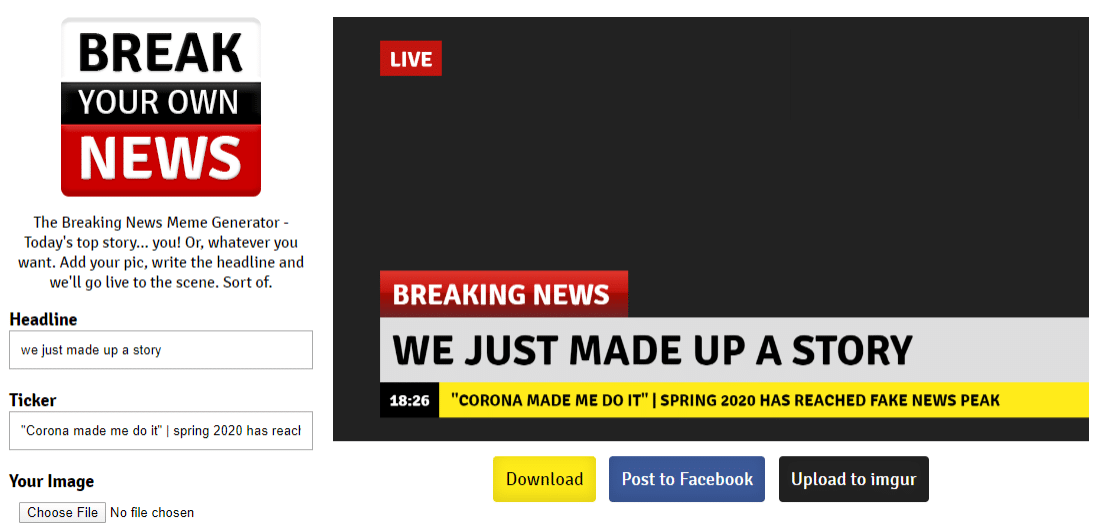False and misleading rumors about COVID-19 have been flying around the globe to such an extent that it has been defined by the World Health Organization as an “infodemic” – or, according to some commentators, a “disinfodemic.”
Some of this fake coronavirus news aims to increase fear and panic. Some spread stories of a miracle drug. Some ascribes the source of the virus to a specific state or blames its spread on minority groups or other causes.
For example, conspiracy theories falsely claiming that the deployment of 5G technology has caused the spread of COVID-19 led to a recent attack on a telecommunications tower in Greece.
Bottom line: Fake news at this time is exacerbating the world’s existing problems – causing harm to social cohesion, creating political tension, and more. But hoax news is easy to spot – that is, once you’ve been sensitized to the nuts & bolts of how it works.
Let’s have a look at how it’s created online. By being able to identify typical pseudo-news characteristics you can weed out fake news stories – and help break the chain of mistrust.
What Goes into Fake News?
Fake news, also known as junk news, hoax news, pseudo-news or alternative facts, is a broad term, covering a variety of techniques used by threat actors that can include:
- Incorrect content – Fake text written to incriminate someone or spread an inaccurate report.
- Photoshopped images – Photographs that were falsified, presenting a picture that is far from the truth.
- Fake footnotes – Artificially created footnote links that lead to fake sources; these give credibility to the content’s alternative facts.
- Clickbait – A technique through which a threat actor earns money by enticing victims to click on a fake link; the link – the “headline” of the fake news article – is written in a style designed to make it very attractive to readers. Classic examples of clickbait include: You’ll never believe what happened when … This is the cutest thing ever … This the biggest mistake you can make … Take this quiz to see which character you are on …
- Clickjacking – A technique that tricks victims into downloading something dangerous; it allows threat actors to take control of the victim’s computer or to steal personal information. As in clickbaiting, the link – the “title” of the fake news article – is written in a style designed to make it very attractive to readers.
How are Fake News Items Created?
Writing a fake news item is surprisingly easy. The Internet is full of free tools that are quick to use and make stories look reliable.

Once a junk news item has been created, there are many tactics that can be used by threat actors to make sure it comes up on your news feed. For example, Siri and other voice systems do not validate the facts that they provide to users. If a fake news item is effectively promoted in the search engines, it can come up on a voice-based search.
8 Tips for Spotting Fake News
If you know what to look for, it’s not hard to uncover a fake news item. Here’s how:
- Consult with the professionals. Check if the story appears on popular media channels. Was it published by a respected media organization? Does it appear on a well-known site or a private blog? Does the URL address look trustworthy?
- How new is the website? Was the website set up recently? You can use a site called Wayback Machine to check exactly when the site was launched.
- Who is the author? Check if the author exists online. Are there other articles under his or her name?
- Look at the headline. Fake news often uses sensationalist or fabricated headlines to lure in victims. Is the headline worded in a way that maximizes the psychological impact on readers? Does it wreak of intimidation or political revenge?
- Do you see spelling and grammatical errors? Do you think the article is well written? Or perhaps it is obvious that the author used an automated translation?
- Check the article’s timeliness. Was the article written recently? Or was it published a long time ago? An old article should not be relevant today.
- Have a look at the sources. Are the sources quoted in the article credible? Or are they third-party sites that were set up very recently?
- Use fact-checking websites. You can also identify fake news by doing some simple fact-checking on dedicated fact-checking sites.
Let’s Work Together to Put the Brakes on Misinformation
Coronavirus is having a severe impact on public health and the global economy, fake news has the potential to cause additional damage. By learning how to identify what’s fake and what’s not, you can stop the spread of dangerous ploys and wild rumors.
Coronavirus is having a severe impact on public health and the global economy, fake news has the potential to cause additional damage
Fake news is just one of many techniques used by threat actors to manipulate users and gain access to an organization. If you would like to speak to a CyberProof expert about protecting your organization from the different types of cyber attack, or have questions for the author, contact us today.














